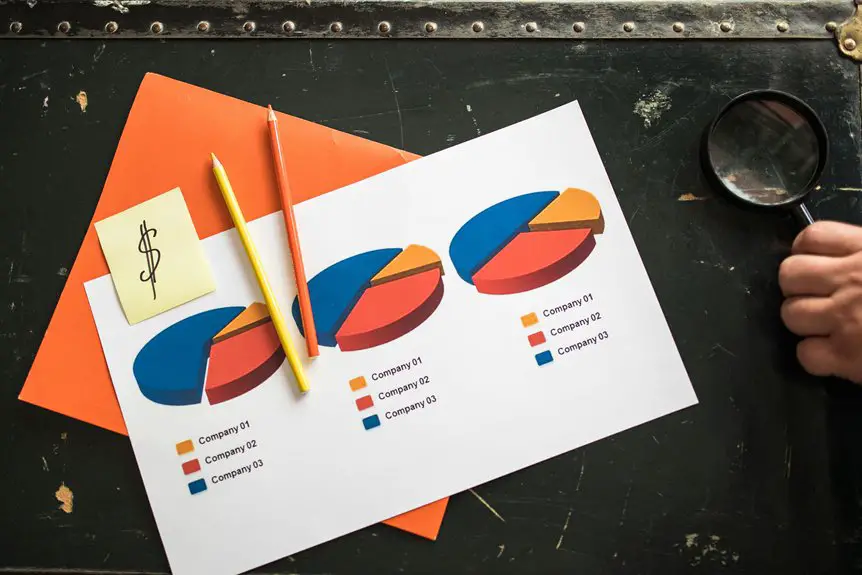When you're deciding between a plastic or aluminum product, plastic usually stands out as the cheaper option. The material costs for plastic range from $0.50 to $2.50 per pound, while aluminum can go from $2.00 to $4.00. Although the manufacturing process for plastic may involve higher initial mold costs, these costs decrease as production scales. Plus, aluminum's durability adds to its overall expense, making it a better long-term investment in specific applications. If you're curious about how these factors play out in real-life scenarios, there's plenty more to uncover.
Key Takeaways
- Plastic materials range from $0.50 to $2.50 per pound, making them generally cheaper than aluminum, which costs $2.00 to $4.00 per pound.
- Plastic injection molding has lower labor costs and high production output, reducing unit costs as production scales.
- Aluminum offers superior durability and lifespan, which can justify its higher initial costs for long-term applications.
- The environmental impact of aluminum is less severe, as it can be recycled indefinitely, while plastics have poor recycling rates.
- While plastic is cheaper upfront, aluminum's long-term benefits may offset its initial cost in certain applications.
Material Costs
When comparing material costs, how do plastic and aluminum stack up against each other? It turns out that plastic typically wins in this arena. For instance, ABS plastic costs between $1.00 and $2.50 per pound, while aluminum ranges from $2.00 to $4.00 per pound. This means you're likely to save money by opting for plastic as your raw material.
If you consider options like polyethylene and polypropylene, the cost can dip even lower, sometimes as low as $0.50 per pound. This significant price difference can greatly affect your overall cost, especially for budget-sensitive projects.
Moreover, the manufacturing process for aluminum is energy-intensive. Extracting aluminum from bauxite ore not only raises production costs but also adds to the overall expense of aluminum products.
On the other hand, plastics like ABS, polyethylene, and polypropylene are widely available, which makes sourcing easier and can keep costs down for manufacturers.
The safe reuse of plastic products, such as those made from Polypropylene, can also contribute to reducing overall material costs by extending the lifespan of existing products.
Manufacturing Processes
Manufacturing processes play a crucial role in determining the overall cost and efficiency of producing plastic and aluminum products.
For plastic products, plastic injection molding is the go-to method. This process allows for high production output and significantly lowers labor costs, especially when you're producing large quantities of plastic parts. Although the initial costs of plastic molds can be high, the cost per unit decreases as production scales up, making it a cost-effective choice.
On the other hand, aluminum manufacturing often relies on CNC machining, a more complex and time-consuming process. This method requires precision, leading to higher costs and longer production times, particularly for intricate metal parts.
While aluminum molds can be advantageous for lower-volume production, they typically come with higher initial costs than plastic molds. The choice of material also depends on factors like material selection which can greatly impact the final product's durability and overall cost.
Durability and Lifespan
After examining the manufacturing processes, it's clear that the choice between plastic and aluminum products also hinges on durability and lifespan.
Aluminum generally outshines plastic in terms of strength and durability, making it ideal for applications that demand high wear resistance and longevity. You'll find that aluminum resists wear and tear better under stress, while plastic can degrade faster, especially in harsh conditions.
When exposed to high temperatures, aluminum holds up without warping or deforming, unlike plastic, which struggles under such stress. This durability significantly extends the lifespan of aluminum products, especially in demanding environments, reducing the need for frequent replacements.
While plastic might seem lightweight and cost-effective for short-term use, you should consider that aluminum's durability justifies its higher upfront cost for long-term applications.
Investing in aluminum can ultimately save you money and hassle over time, as its longer lifespan means fewer replacements and repairs. In making your choice, weigh the benefits of durability and lifespan against the initial costs—it could lead to a more cost-effective solution in the long run.
The choice between plastic and aluminum also depends on the Environmental Impact of the materials, which is a crucial consideration for businesses and consumers looking to reduce their ecological footprint.
Environmental Impact
While both plastic and aluminum products serve essential roles in our daily lives, their environmental impacts differ significantly.
Plastic production is often lauded for its low cost, but the consequences are far-reaching. With about 300 million tons of plastic produced annually, you contribute to an alarming rate of plastic pollution, with 8 million tons entering the oceans each year. This pollution affects marine life and ecosystems, creating long-lasting damage.
In contrast, aluminum, despite being more energy-intensive to produce, boasts high recycling rates. You mightn't realize that recycled aluminum uses 95% less energy than new production, making it a more sustainable choice.
Unlike plastics, which take up to 1,000 years to decompose, aluminum can be recycled indefinitely without loss of quality. This significantly reduces its long-term environmental impact.
The complexity of recycling plastics results in a meager global recycling rate of only 9%, while aluminum's higher rates stabilize prices and minimize waste.
Additionally, microplastics, originating from plastic pollution, have infiltrated 90% of bottled water, linking them to various health risks. Recognizing these differences can help you make more informed choices for the environment.
Approximately 100,000 marine mammals die annually due to plastic-related issues, which is linked to marine debris and highlights the need for sustainable alternatives to reduce this staggering number of deaths.
Pros and Cons
Weighing the pros and cons of plastic and aluminum products reveals distinct advantages and disadvantages for each material.
When you need parts made, understanding these differences can help you choose wisely.
1. Cost-Effectiveness: Plastic, generally costing between $0.50 and $2.50 per pound, is more affordable than aluminum, which ranges from $2.00 to $4.00 per pound.
If you're looking for economical solutions, plastic is the way to go.
2. Durability and Strength: Compared to metal, aluminum offers superior strength and heat resistance, making it ideal for products that require long-term reliability.
If your application demands durability, aluminum might justify its higher costs.
3. Sustainability: The recycling process for aluminum is more energy-efficient than for plastic, which has low recycling rates.
Although aluminum's initial costs are higher, its environmental benefits can pay off in the long run.
Considering the environmental impact, the production of plastic bags has a lower carbon footprint than cotton and paper bags, which is an important factor in the cost comparison between plastic and aluminum products.
Frequently Asked Questions
Is Plastic or Aluminum Cheaper?
When you're comparing plastic and aluminum, you'll find plastic typically costs less, especially due to lower raw material prices and efficient manufacturing processes. This often leads to significant savings in production for your projects.
What Is Cheaper, Plastic or Metal?
When you compare plastic and metal, you'll find plastic's generally lower material costs and lighter weight often make it cheaper. Consider your project's needs, though, as durability and recyclability might sway your decision.
Is Plastic Cheaper to Produce?
Yes, plastic's generally cheaper to produce. You'll find lower material costs and efficient manufacturing processes, allowing for higher production quantities. This often leads to significant cost savings compared to other materials, especially metals.
Which Is Better, Aluminium or Plastic?
When choosing between aluminum and plastic, consider your needs. Aluminum's strength and durability shine in long-term applications, while plastic's lightweight and cost-effectiveness make it ideal for short-term use. Your choice depends on specific project requirements.

